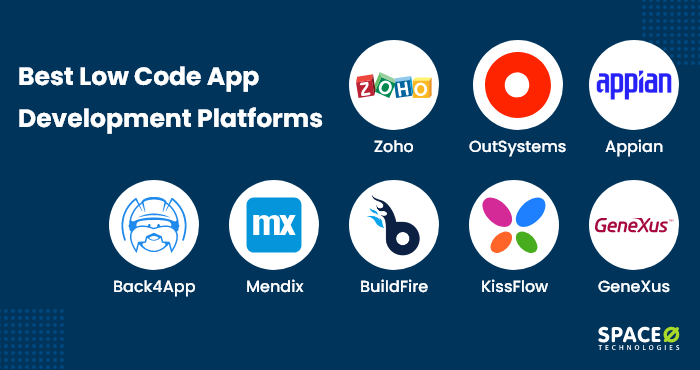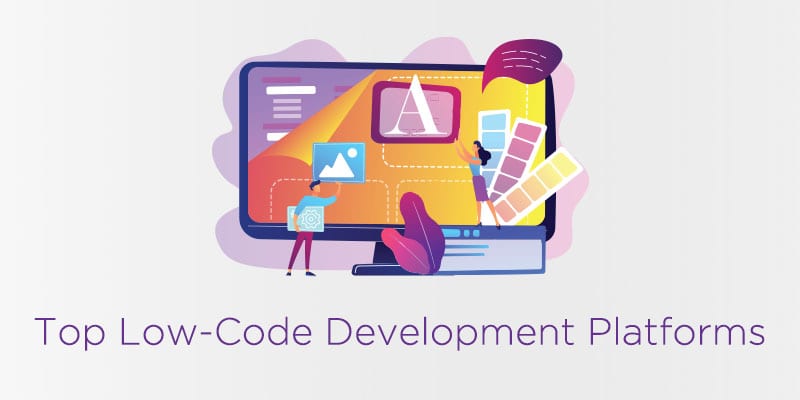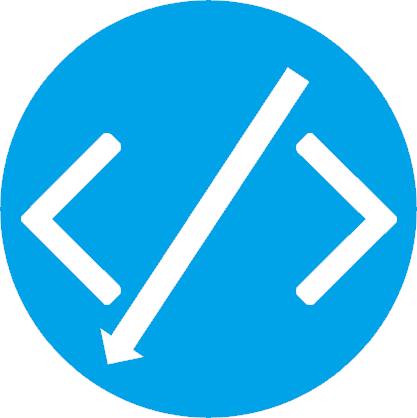Excellent Reasons For Selecting Legacy application modernization with Low-code
Benefits Of Low-Code Development In Terms Of SpeedLow-code application development significantly enhances development speed due to several key factors: Visual Development Environment:
Drag-and-Drop Interfaces: Low-code platforms provide visual tools for designing applications. Developers can utilize drag-and-drop tools to quickly assemble applications without writing a large amount of code.
Many low-code platforms have pre-built templates and components. This lets developers quickly build or prototype applications, without needing to start with a blank slate.
Reduced Coding Requirements
Automated Code Generation Low-code platforms automatically generate the code that is used to build the visual models developed by developers. This eliminates the requirement to write code manually and accelerates the development process.
Reusable Components: Developers can reuse components across multiple projects, minimizing the time spent on writing and testing code.
A more efficient collaboration
Low-code platform tools usually include versions control, testing deployment. This facilitates seamless collaboration between teams.
Development by citizens: Using simple interfaces and decreasing bottlenecks often caused by the limited availability of business users, developers and other users can help in the development of applications.
Rapid prototyping and rapid iteration
Fast Prototyping : Developers create prototypes quickly to validate concepts and get feedback. This leads to shorter iteration cycle.
Easy modifications. The visual nature low-code development gives makes it simple to update and change applications. This speeds up the process of improving and refining applications in response to the feedback of users.
Pre-built Integrations:
API Integrations: Low-code platforms typically come with connectors to popular services and APIs. This cuts down on the time required to connect external systems.
Data Integration: The built-in tools make it easier for connecting databases with other sources, speeding up the process of development.
Deployment and Scaling
One-Click-Deployment: A lot of Low-Code platforms provide one-click deployment options. This cuts down on the amount of time and effort required to set up an application.
Cloud-based solutions: Cloud platforms with low-code allow developers to concentrate on the logic and functionality of their applications instead of worrying about deployment logistics.
The primary benefit of developing applications using low-code with regard to speed, is its capacity to automate and simplify a variety of aspects of the development process. This allows for quicker delivery of applications and faster adaptations to evolving demands. See the top her explanation for Low-code Platform for application development for more advice including push alerts, application development platforms, develop web app, app development platform, build with docker, cross platform mobile app development, database in azure, cloud software applications, develop web app, application modernization and more.

The Benefits Of Low-Code Development In Terms Scalability, Flexibility And Scalability
Low-code development of apps offers many advantages, such as scalability and flexible application design. These are crucial for creating applications that can adjust to the changing demands and evolve with the company. Here are the key advantages: Rapid Scaling
Cloud-Based Deployment: A lot of low-code platforms are cloud-based that allow applications to scale easily with the cloud infrastructure. This allows companies to handle the increasing demands without worry about server management.
Auto-Scaling Features: Auto-scaling functions built-in allow for automatic adjustment of resources in response to demand, ensuring the same performance even during peak hours without any manual intervention.
Flexible Architecture:
Modular Design: Low code platforms promote the modular design of applications. This allows components to be developed independently, tested and scalable. Modularity improves flexibility and it is easier to modify specific elements of an app without having to change the entire system.
Microservices Integration : In support of microservices, applications can be built using loosely-coupled services to enhance flexibility and scalability.
Customizable Options:
Extensibility: Low-code platforms typically allow customized scripting and programming that allows developers to expand the capabilities of their applications beyond what is available in the box. This allows for the fulfillment of unique business needs without limitations.
Third-Party Integrations: Companies can incorporate additional functions and services into their applications through APIs and other third-party services.
Agile Development and deployment:
Continuous Delivery and Deployment: Low-code platforms support agile methodologies that allow continuous integration and continuous delivery (CI/CD). This allows for the rapid release of new features and updates, while ensuring that the applications are able to evolve rapidly in response to user feedback and market trends.
Iterative Development: The iterative nature of low-code development ensures that applications can be incrementally improved and expanded, reducing risks of large-scale changes and allows for greater control over growth.
Resource Optimization
Resource management that is efficient Low-code platforms maximize resources by supplying tools to monitor and control the performance of applications. This allows resources to be utilized efficiently and also to be sized up or down according to the need.
Load balancing: The application handles high volumes of traffic efficiently and with a high degree of consistency because of the integrated load-balancing features.
Global Reach
Multi-Region Implementation: Low code platforms can be implemented across a variety of geographic regions. This enables companies to provide users with high-quality, low-latency services across the world. This is crucial for applications that cater to an international audience.
Localization Support. Inbuilt support for localizing applications allows them to be easily adjusted to various languages, regional requirements and improves their flexibility in diverse markets.
Maintenance and Updates
Simplified Maintenance: The aesthetic and modular design of low-code programs makes maintenance easier which allows upgrades and bug fixes to be completed quickly and without a long period of downtime.
Version Control System for Version Control: These integrated versions handle rollbacks and changes in order to make sure that upgrades can safely be made and that older versions are restored when needed.
Cost Efficiency:
Low Development Costs: By cutting down on the amount of code needed, low-code platforms can cut down on the development cost. This allows to expand applications without needing to increase development efforts and expenses.
Pay-As-You Go Models: A lot of low-code services offer a variety of pricing models, such as pay-as you-go that align costs with usage and growth, providing financial flexibility.
In general, low-code applications developers offer a high level of scalability and flexibility that allows companies to rapidly build adaptable and flexible applications. These platforms permit quick adjustments to changing demand and efficient utilization of resources and constant advancement. Applications can grow and evolve with the needs of the business. Check out the most popular Legacy application modernization with Low-code recommendations for website examples including paas service, app modernisation, microsoft azure sql, sso azure, rapid application design, cross platform app development, cross platform mobile app development, develop cross platform mobile app, low code platforms, database in azure and more.

The Benefits Of Low-Code Development For Vendors And Community
Low-code development platforms offer significant advantages when it comes to support for vendors as well as the community. These are crucial to ensure successful implementations, continuous maintenance, and continuous development. These are the main benefits:Vendor support
Comprehensive Technical Support:
Support Teams with Dedicated Support Many low-code platforms offer dedicated support teams who can help with technical issues, problem-solving and provide guidance. This helps ensure that any problems are quickly resolved.
Certain vendors provide 24/7 support. This is especially beneficial to global businesses with different time zones.
Training and onboarding:
Structured Training Programs: Vendors often provide structured training programs, including tutorials, webinars and courses for certification, to help users get up to speed with the platform quickly.
Personalized Onboarding Many vendors offer personalized services to help their new clients implement the platform successfully and tailor it specifically to their needs.
Regular Updates, Enhancements, and Improvements:
Continuous improvement: Low-code platforms generally release updates regularly which include new features, performance enhancements and security patches ensuring that the platform stays modern and safe.
Feedback Integration: Vendors include user feedback in their design cycles to ensure the platform is continually evolving to meet the ever-changing needs of its users.
Comprehensive Documentation:
Documentation: Comprehensive documentation is provided for the majority of products. It covers everything from the basics to the most advanced customisation. This can help users find solutions for themselves.
API References API documentation can aid developers customize and integrate applications using the Low-Code platform.
Consulting and Professional Services:
Expert Consulting: Vendors typically provide consulting services that assist in the process of strategic planning architectural design, as well as complicated implementations, to ensure that users have the ability to leverage the platform to its fullest potential.
Custom Development Services: Certain providers offer custom development services to create specific integrations or features that are not available out-of-the-box.
Community Support for the Community
Active User Community:
Forums and Discussion Boards Numerous low-code platforms have lively online communities where users can ask questions, share solutions, and work together on the best practices.
User Groups and Meetups Virtual or local user groups and meetings offer opportunities to network, learn and sharing experiences.
Knowledge sharing and collaboration:
Community-Contributed Resources: Users often share templates, modules, and extensions that they have developed, which can be reused or adapted by others, accelerating development and innovation.
Crowdsourced problem solving The collective experience and knowledge of the community can be an invaluable resource for troubleshooting problems and coming up with innovative solutions.
Learning and Development
Community-Led Training: Several communities hold workshops, training sessions and webinars. They are often run by knowledgeable users who offer practical tips and more advanced methods.
Tutorials and Online Courses: Community members frequently make and share online courses, tutorials, and how-to guides, enhancing the educational resources that are available to all users.
Feedback and Influence
Product Feedback Channels. Forums for community members usually have channels where you can provide feedback to the company. Feedback from customers can influence the design and development of new features.
Beta Testing Programs: Active community members could be able to take part in beta testing programs, which gives them early access to new features as well as a say in determining the future of the platform.
Recognition and Support:
Community Recognition Programs - A lot of vendors have recognition programs to recognize the efforts of active members of their communities such as MVP (Most Valuable Professionals) programs.
Peer support: Community members tend to be willing to provide peer-to-peer support, offering their expertise and guidance to those who may be less knowledgeable. They foster a collaborative environment through encouraging cooperation and creating a positive atmosphere.
The combination of robust vendor support, and active, engaged communities offers a wide range of support for low-code development. It makes sure that users have access to the knowledge, resources and collaboration opportunities that they require to successfully develop and deploy their applications.
